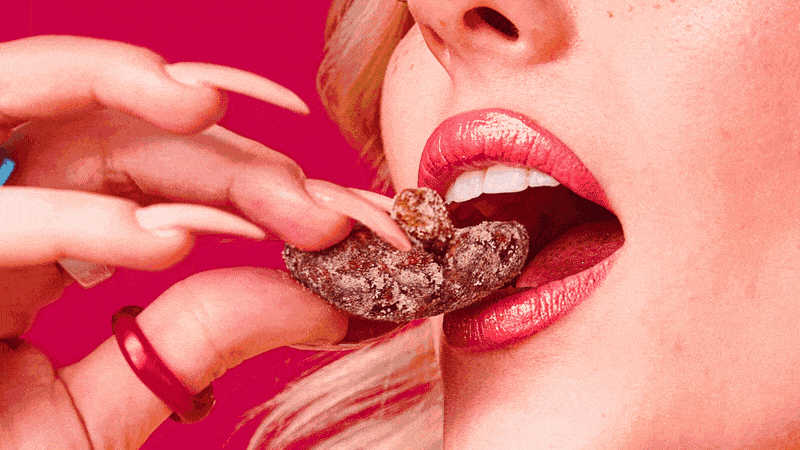3
Minute read
How to Safely Forage for Mushrooms
A beginner’s guide from 'shroom expert Karen A. Stephenson.
“You can eat any mushroom… once.”
While it sounds like a wholesome activity, picking wild 'shrooms can be a dangerous endeavor. With fungi foraging season in full swing, Karen A. Stephenson, author of the recently released book Beginner's Guide to Safely Foraging for Wild Mushrooms, cautions against jumping into the forest without adequate preparation. Here, Stephenson's distilled some main points from her tome’s over 100 pages of intel, so you can begin foraging knowledgeably and safely.
SEVEN TIPS FOR SAFE (& FUN!) FORAGING
1. BURY YOUR NOSE IN A BOOK… OR FOUR
To begin, Stephenson advises studying up on 'shrooms. “There are over 10,000 wild mushrooms in North America, so getting to learn even one percent of these can take several months,” she says. Stephenson advises perusing at least two—preferably three or four—mushroom-identification books in preparation for your first forage because, she cautions, mushroom identification apps are not always reliable and the stakes are high, since consuming the wrong 'shrooms can be fatal. “Part of learning what wild mushrooms are safe to eat is knowing which ones are not,” she says. “When looking through books and online, be sure to learn what toxic mushrooms are out there."
.png)
2. SCOUT YOUR SITE
According to Stephenson, the next step in prep is to find out where you can forage. “Always remember never to trespass and also know the laws,” she says. “Some state and federal parks may require permits, and some may forbid foraging altogether.” Also, if the area in which you wish to forage is known for its tick population, Stephenson says it may be best to choose another location or, at the very least, be sure you have protected yourself from ticks and do a thorough tick check when you get home.
3. PREP YOUR PACK
There are only a few items Stephenson recommends including in your foraging bag or basket. In addition to a mushroom knife, a toothbrush (to clean the dirt of your 'shrooms), bug spray, water, and a snack, she advises carrying a journal, where you can record the places you’ve been and the mushrooms you’ve found to use as a reference for future forages. “Most mushrooms will return to the same area year after year because they have a mycorrhizal association with specific trees,” she says. You may also want
4. TRY A TEST RUN
“Your first forage should be more of an explorative trip,” says Stephenson. “Gather some mushrooms for the sole purpose of learning how to identify them, making sure to note what trees they were near.”
5. STUDY YOUR SPECIMENS
Once you’ve returned home with your haul, Stephenson recommends taking time to properly study each 'shroom. She suggests making note of the following characteristics:
- Size
- Color
- Cap shape
- Stem shape (especially at the base and where it connects to the cap)
- Gills, ridges, or pores on the underside of the cap
- Texture
- Smell (some mushrooms have a very distinctive smell as described by various field guides)
Lorem ipsum dolor sit amet, consectetur adipiscing elit. Suspendisse varius enim in eros elementum tristique. Duis cursus, mi quis viverra ornare, eros dolor interdum nulla, ut commodo diam libero vitae erat. Aenean faucibus nibh et justo cursus id rutrum lorem imperdiet. Nunc ut sem vitae risus tristique posuere.
Image Provided By
.png)
.png)

6. IMMORTALIZE YOUR FUNGI FINDS
Next, Stephenson suggests making a spore print by putting a mushroom cap on a piece of paper and placing a small bowl over it. After a few hours, remove the jar and cap to see what color spores the mushroom drops. “Spore prints make some really unique designs,” she says.
Alongside each spore print, Stephenson suggests writing the identifying features listed above, placing the actual mushroom on the page, and taking a picture of the whole shebang. “You can protect the spore print by placing a piece of clear Mactac over it,” she says. “Keep that paper in a binder, and before long you’ll have your own library of various mushrooms.”
7. ENSURE SAFETY BEFORE CONSUMPTION
If you’re planning to eat your foraged 'shrooms, Stephenson reiterates the importance of being 100 percent certain of the type of fungi first to avoid ingesting anything toxic. “And even if you correctly identify a mushroom, any wild edible mushroom must be cooked before consuming,” she adds. Many mushrooms can be simply sautéed with olive oil, salt, and pepper, but if you’re in the mood for something a little more exciting, you can find a few summer barbecue-perfect recipes here.
Image Provided By

Previous post

Back to The Boom
Next post


.jpg)
.jpg)








.jpg)
.jpg)

.jpg)
.jpg)


.jpg)




.jpg)
-2.jpg)
-2.jpg)
-2.jpg)


-2.jpg)

.jpg)
.jpg)

.png)
.png)
.png)
.png)

%20(1).jpg)
%20(1).jpg)
-2.jpg)
.jpg)
-2.jpg)
-2.jpg)
%20(1).jpg)
%20(1).jpg)
.jpg)
.jpg)
%20(1).jpg)
.jpg)
.jpg)
%20(1).jpg)
.jpg)


%20(1).jpg)
%20(1).jpg)
%20(1).jpg)

%20(1).jpg)
.jpg)
.jpg)
.jpg)
.jpg)
.jpg)
.jpg)
%20(1).jpg)
%20(1).jpg)
%20(1).jpg)
%20(1).jpg)
%20(1).jpg)
%20(1).jpg)
.jpg)
%20(1).jpg)
%20(1).jpg)
%20(1).jpg)

.jpg)
.jpg)
.jpg)

.jpg)
.jpg)
.jpg)
.jpg)
.jpg)
.jpg)
.jpg)
.jpg)
.jpg)

.jpg)
.jpg)
.jpg)
.jpg)

.jpg)
.jpg)
.jpg)
.jpg)
.jpg)